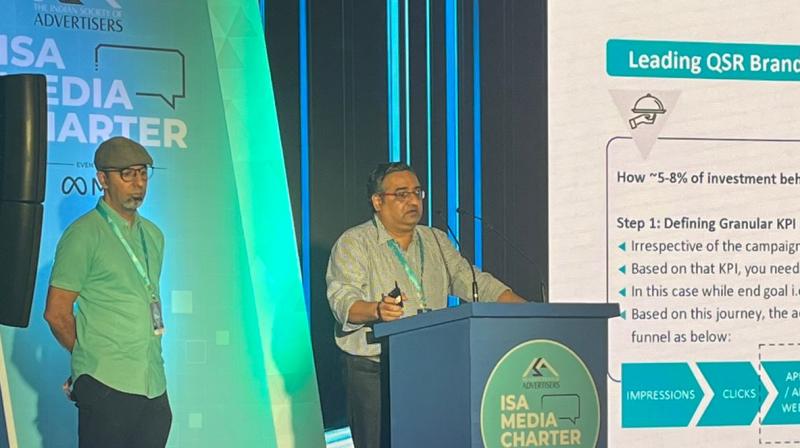What do in case an ad fraud happens? How can one avoid these frauds? What should advertisers do to safeguard themselves from the fraud? These were the key themes discussed at one of the sessions at the Indian Society of Advertisers (ISA) Media Charter which was held in Mumbai on 10 September.
The presentation on ‘Ad Fraud’ was conducted by Jaikishan Chhaproo, media head, ITC and Gautam Surath, chief operating officer, Performics.
Surath opened by explaining what ad fraud is and how it affects the ecosystem. He said, “In ad fraud, the biggest impact is the financial one. As consumers move to newer mediums, you will see fraud move along with them. For instance, in CTV, even though there are fewer devices, you will see a fair amount of spoofing happening.”
Surath then touched upon how one can tackle these ad frauds and suggested that advertisers should begin with the fundamentals and know from where the traffic is coming.
“Any detection technique has to be based on looking at the data quite deeply. Start from the basics like looking at data from an IP address and monitor it just to know from where the traffic is coming. And whether it is true traffic or not, and then extrapolate that to geographies. Diving a little bit deeper into what is happening in your data is the way,” he explained.
He further added that behaviour is the key aspect when it comes to detecting ad fraud because there is a certain pattern in which a human behaves on websites and how a machine behaves.
Stressing the importance of technologies that can help overcome fraud, he asserted, “There are advanced technologies that are coming in and you can look at advanced technologies to measure if this is human or not and one of those is biometrics. Fingerprinting is becoming a common way to access quite a few things. So just using that technology along with biometrics might help us identify humans. There are, of course, further advanced technologies, which I think are less and less talked about today.”
Chhaproo took over to explain how frauds are not just limited to ads.
He said, “The fraud movement extends itself beyond the advertisements. One of the areas where most advertisers are currently spending a significant amount of their money is influencer campaigns. And two out of three social media profiles have fake followers. Buying fake followers is much cheaper than buying a cup of tea, today. You also have instances wherein fake engagement is kind of purchased. Some tools and partners currently track the validation for most of the influencers.”
Suggesting what to do in case a fraud has happened, Chhaproo said, “Have a proper detection system to ensure that if fraud happens, it is detected. Define the metrics that you are checking and be transparent about them and communicate the same with your publisher. So that there is no ambiguity.”
On a concluding note, he recommended advertisers on what to do to avoid ad fraud.
He said, “Go to a verified partner. Vet the partner before you onboard them because different partners have different approaches and different algorithms that work for the same set of activities. Ensure that you are measuring the key objectives and key parameters for your particular campaign. The KPIs need to be agreed upon at all ends. Transparency is significantly critical because this is where you will have a complete safeguard in instances when fraud is occurring. Know your matrix and closely monitor your campaigns at all times.”










